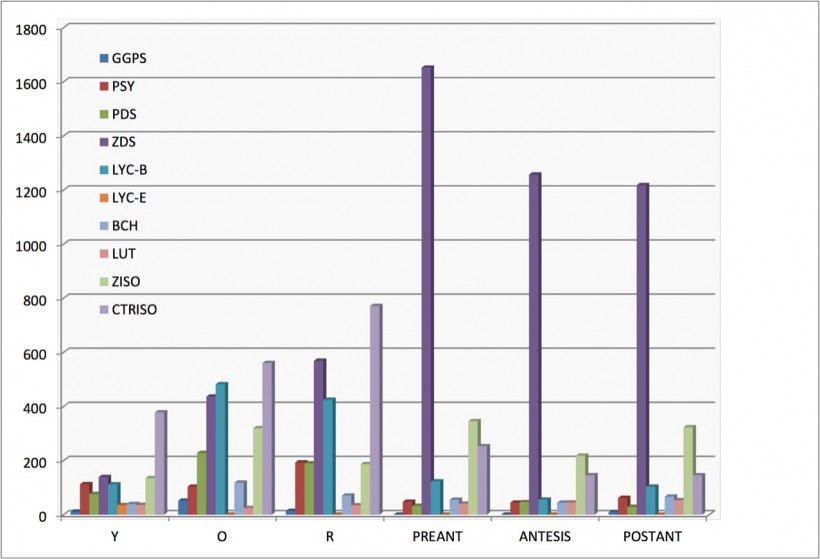Summary
In the stigma of Crocus sativus the carotenoids derivates crocin and crocetin have been identified as major components of the spice saffron. Saffron is used almost exclusively as a culinary seasoning and to colour. Nowadays its potential use as antitumoral agent in humans has been proposed (Abdullaev, 1993; Nair et al., 1995; Escribano et al., 1996; García-Olmo et al., 1999; Fernández y Escribano, 2000). Carotenoids are one of the most diverse and widely distribute groups of natural terpenoid pigments. They play essential functions protecting against oxidative damage, being responsible for the colour and the flavour of many plant products, such as tomato and saffron. Because of the importance of carotenoids the enzymes responsible for the biosynthetic pathway from phytoene to zeaxanthine have been characterised and theirs structural genes cloned from a wide array of higher plants (Hirschberg, 2001). However, the identification of genes encoding for the enzymes involved in the biosynthesis of further carotenoids derivatives, the apocarotenoids, which have important metabolic and hormonal functions in diverse organism, remains mostly unknown, and their characterisation might be difficult due to the fact that often these derivates are unique for a particular plant specie. Therefore, our major interest is the identification of genes encoding specialized steps in carotenoid metabolism that would allow the engineering in saffron, and in other crops or microorganisms of these high value compounds, and to study their regulation and their contribution to the regulation of crocin and crocetin biosynthesis.


